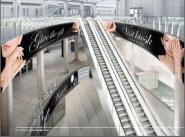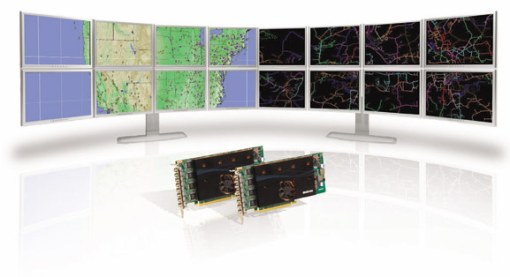
Breakthrough Modular Technology Unleashes Freedom to Create Virtually Seamless Digital Displays in Any Size, Any Shape, Any Place
Unique MicroTiles digital display technology that creates a virtually seamless digital canvas in almost any size or shape – and offers spectacular, crisp visuals at any distance – is now available from Christie.
Christie MicroTiles are modular digital display tiles that can be stacked and clustered like building blocks to create display walls of any shape or scale, using an entirely new, advanced optical design that produces unparalleled levels of brightness, contrast and color reproduction.
The Christie MicroTiles system represents a huge step forward in large-format digital display technology, offering superior color and image reproduction, the widest possible viewing angles, and a near absence of seams on display walls, with only a 1mm gap between the tiles. The groundbreaking LED- and DLP-based system is designed for long, reliable commercial use in public areas, with no lamps or other consumable parts to replace. The LED light engine, a key component of MicroTiles, is rated at 65,000 hours to half brightness usage, or nearly 7.5 years of continuous operation.
With a screen size of 16 inches (408mm) wide x 12 inches (306mm) high, the tiles also feature a shallow depth of only 10 inches (260mm) and require just 2 inches (50mm) of minimal clearance for rear ventilation. Christie engineers designed the MicroTiles to be fully and easily serviced from the front. The tiles are “self-aware” – meaning that time-consuming and costly color calibration needed to keep conventional “video walls” looking uniform, is automatically completed by the sensors built into the MicroTiles.
While the engineering behind the display tiles is extraordinarily sophisticated, walls of tiles are controlled by a simple unit that processes the signal from the most popular digital signage and media players.
Known around the globe for high quality digital projection systems, Christie has had its new tiles in R&D for two years. Technology and visual design experts who’ve seen sneak previews this year have described the system as “one of the wonders of the world in displays.”
“MicroTiles represent a distinct revolution in display technology, that allows users to create their own digital canvas or digital wallpaper,” said Bob Rushby, the co-inventor and chief technology officer at Christie. “With MicroTiles, users can express their creativity and vision, and assemble the displays in ways that have previously been unattainable using current flat panel LCD, plasma or LED walls.”
“Assemble the tiles any way you like, take them apart and re-assemble them in a new configuration, and they ‘recognize’ each other every time and adjust the image automatically,” Rushby added. “Our partners are discovering new ways of using digital display that would have been impossible or impractical before MicroTiles.”
The spectacular image quality and modular flexibility of the MicroTiles system opens up wide possibilities for companies charged with designing and creating large, vivid visual displays for architectural installations, out-of-home advertising, event centers, command and control facilities and retail environments. MicroTiles can easily be incorporated to fit within the physical constraints or opportunities of a building and eliminate all the compromises made when using other display technologies.
“Christie MicroTiles open up a whole new world of possibilities for the various display markets,” Rushby added. “They offer an innovative, visually striking digital solution to deliver messages and make them memorable.”
[press release]











Recent Comments